
Curly Propaganda I’m Not Falling For + The Doux Mousse Review
If you’ve ever felt confused, overwhelmed, or even down because your wavy or curly hair routine doesn’t look like what people on the internet swear
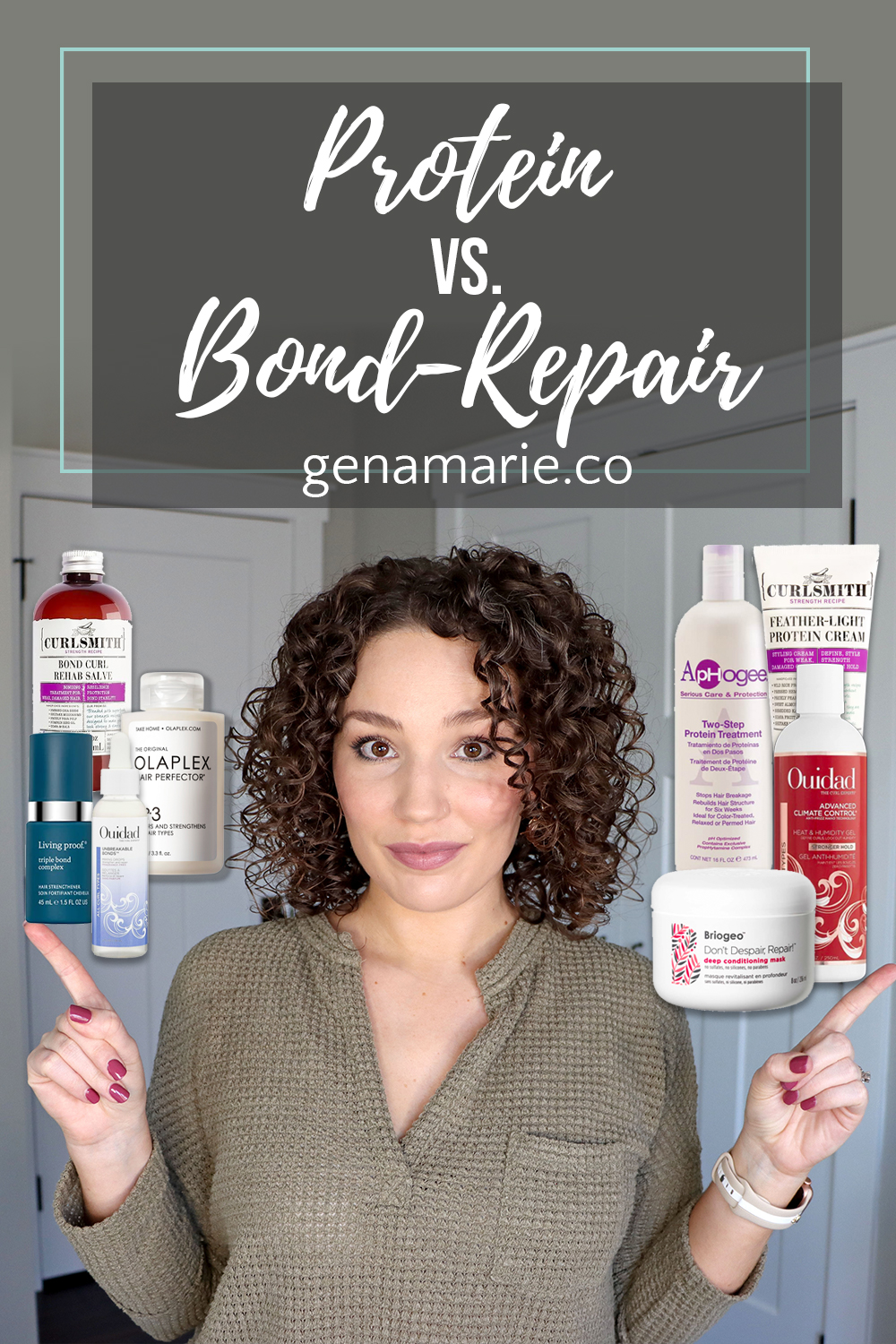
Protein versus bond-repairing treatments, which one do you need? While they both fight damage to make your hair stronger, they work in very different ways. I’m going to be sharing the differences and how to determine which one is best for your unique type of damage.
Disclaimer: I am not a chemist, hairstylist, or trichologist. I am just someone passionate about hair science and compiling research to make it easier to understand for you. All sources will be linked below.
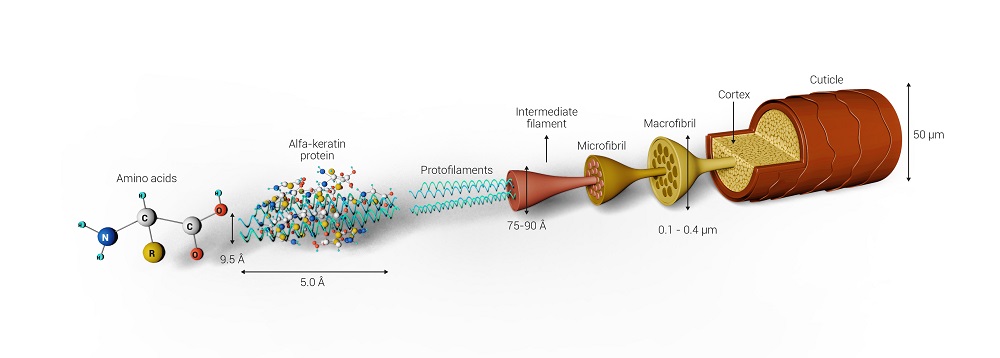
It’s helpful to first understand the anatomy of a hair strand. Hair is made up of mostly protein, specifically keratin within the cortex layer of the hair. The outer layer is the cuticle which is made up of dead, overlapping cells.
The cortex swells when it gets wet, pushing the cuticle layer out. A healthy cuticle, such as virgin hair, keeps the hair protected, maintaining adequate protein for structure and strength.
Proteins can be lost from the hair when the cuticle layer is damaged. The cuticle gets small cracks and holes in it when it is damaged over time by heat, chemicals, detangling, the sun, and much more.
Protein ingredients are added to hair products to deposit protein on the hair to temporarily strengthen and condition it. They adhere to damaged hair, both penetrating and creating a film on the hair to fill in gaps in the hair’s cuticle. This in turn helps the hair feel stronger, retain its structure, and prevent future breakage. They’re also are humectants, meaning they attract and hold water. This means that proteins also moisturize and condition the hair. You will also notice your curls may appear tighter or spring up more with protein.
Examples of ingredients include:
Depending on the size of the molecule, some proteins can absorb and some sit on the surface.
The most common protein ingredients are plant proteins such as hydrolyzed wheat protein, hydrolyzed quinoa, and hydrolyzed soy protein. Some proteins are larger so they’re more likely to build up on the hair. This can feel stiff or brittle, especially when protein is not needed such as on healthy hair and coarse hair.
There are also amino acids that are smaller in size and can penetrate more easily. Amino acids are less likely to cause adverse reactions and can be used by any hair type.
Those with low-porosity hair, coarse-textured hair, and/or those with very healthy hair are more likely to experience protein buildup because they do not need as much strengthening.
Proteins can be added to any hair product and varying concentrations. They’re often added to styling products like curl creams and gels to help smooth the cuticle and help the curls retain their structure.
Another great way to get in protein is in your deep conditioning treatments, which are usually more potent than stylers. These are used after shampooing, and you let them sit for anywhere from 5-30 minutes before rinsing. Deep conditioners also contain moisturizing and sealing ingredients to strengthen and soften the hair.
The most potent form of protein would be in a protein treatment such as Aphogee. This is a treatment usually done in a salon and contains Collagen and vegetable protein. This is used after shampooing, left on for just a bit, and rinsed out. Then there is a moisturizer or conditioner step after.
There often are not many conditioning ingredients in protein treatments as you will find in protein deep conditioners. This can be more risky for people to use at home, especially if you’re unsure if you even need protein or don’t have much damage.
The more potent the product, the more likely you could experience protein overload, of the stiffness or brittleness that comes with protein buildup.
Going back to the structure of the hair, hair is made up of keratin and it’s held together by bonds. There are 3 types of bonds, including hydrogen and iconic/salt bonds which are physical bonds that are reformed with water, heat, and changes in pH. The third type is disulfide/covalent bonds which are chemical covalent bonds that are broken when the hair is damaged.
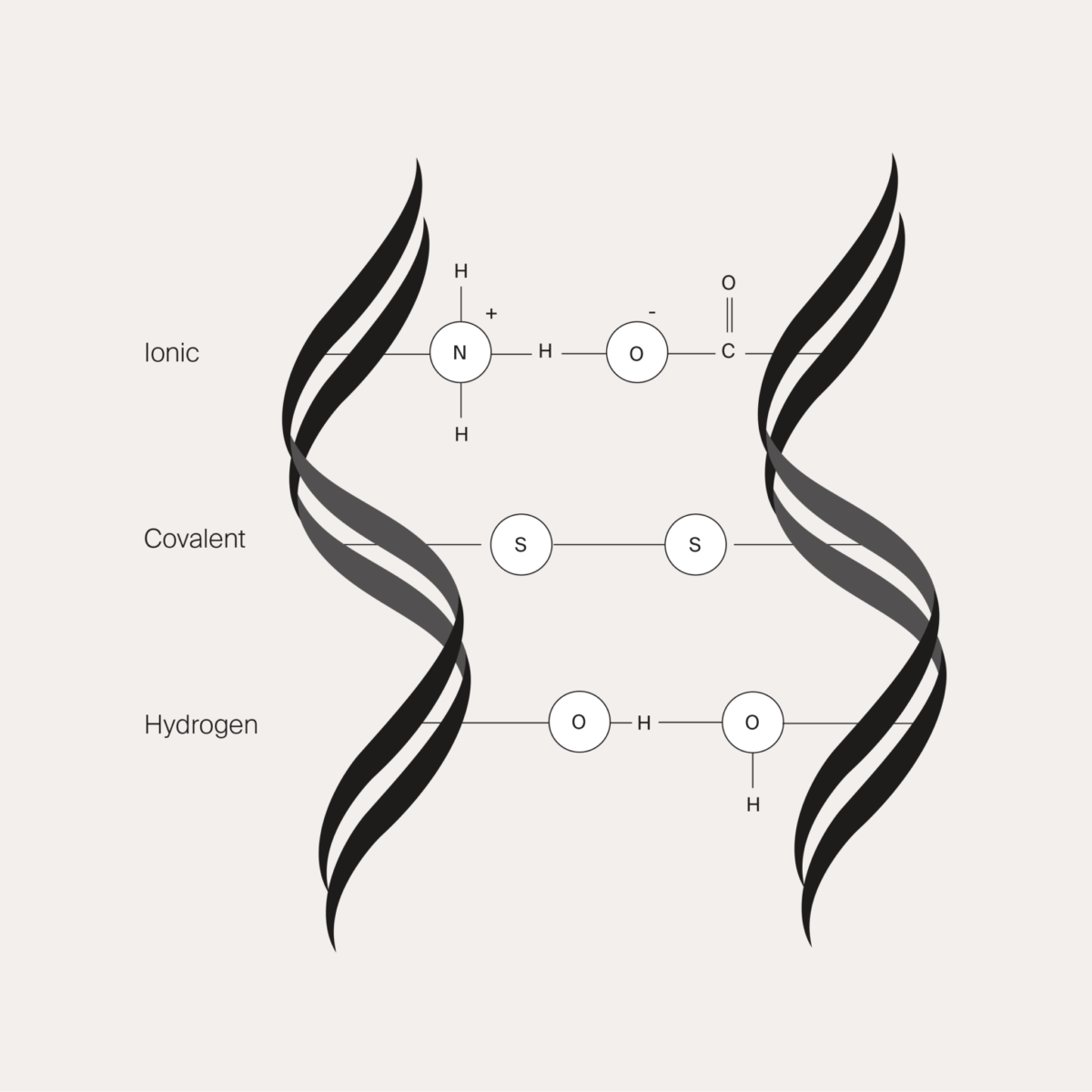
Bond-repairing products are becoming more and more popular now you can find bond-repairing ingredients in everything from shampoos and conditioners to treatments.
Bond repairing products are designed to actually repair damage in your hair by relinking broken bonds in your hair. You will usually also notice more bounce in your curls and tighter-looking curls. They penetrate the deep layers of the hair to physically repair it, which is crazy considering damage is usually irreversible and requires cutting off. While it’s still advised to grow out severe damage and get it cut off, you can strengthen your hair and prevent future damage with bond-repairing products.
Since bond-repairing products are physically repairing your hair, the effects are not just temporary or “surface-level” like protein ingredients, as long as you’re maintaining healthy hair. You are less likely to experience negative effects such as brittleness from bond-repairing products because they can’t “build up” on the hair like protein. This makes them a better option for those who may not tolerate protein treatments.
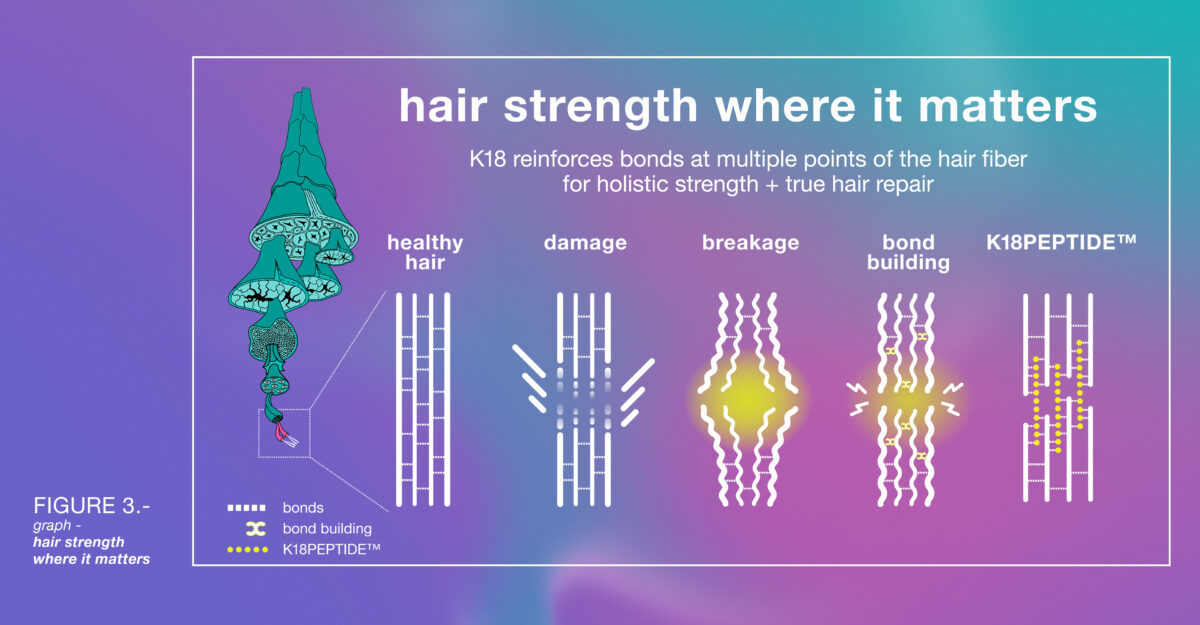
Various ingredients repair broken bonds and this technology is typically patented by brands. Olaplex and K18 are popular pre-shampoo treatments. I’ve never tried K18, but would love to one day. I have used Olaplex for years.
Olaplex was one of the first popular brands with bond-repairing products, which started as a treatment done in the salon after someone had chemical treatments done to their hair such as bleaching. People could purchase Olaplex No. 3 as a take-home step for maintenance after their treatment was done in the salon.
However Olaplex No. 3 became a popular hair treatment that anyone was purchasing to use to strengthen their hair even if they haven’t had the salon treatments done, and sometimes without even having bleach damage.
While Olaplex is most beneficial for those with chemical damage, it can repair damage from everyday wear and tear such as brushing, the sun, and heat styling. This is why I still use Olaplex even though I have virgin hair.
It’s used before shampooing and you should always follow up with a deep conditioner after shampooing it out.
Another pre-shampoo bond repairing treatment is Curlsmith’s Bond Curl Rehab Salve. This is unique in that it has both bond-repairing ingredients and protein. While any hair type can use this, it’s especially going to benefit those with high porosity hair.
Bond Curl works to repair all 3 types of bonds. This would repair the structure of your hair and fill in the gaps in the hair’s cuticle. You shampoo it out, and then deep condition after.
Both Olaplex and Curlsmith’s Bond Curl can be used once a week for those with very damaged hair, and once a month or so for those with less damage.
Even though these treatments have some conditioning ingredients to help them spread around in your hair, they are not going to soften and condition the hair. You must follow with a deep conditioner after you shampoo them out to prevent stiffness.
You also need to make sure you’re following the directions and only leaving these treatments on for 10-30 minutes. The product will stop working after that time and when your hair begins to dry. People often misuse them by leaving them on all day or sleeping in them, and they can have adverse reactions.
There are also shampoos, conditioners, deep conditioners, and leave-in conditioners with bond-repairing ingredients. Leave-ins such as the Living Proof Triple Bond Complex would be the most potent and the most convenient because it’s left on the hair. This is applied to clean hair before any stylers, and you let it sit for 10 minutes before you finish styling.
This repairs all 3 types of bonds and is unique because it protects from heat and the sun and smooths the cuticle. It’s used weekly, such as once per week.
Another convenient way to get in your bond repair is using mix-in drops like the Ouidad Unbreakable Bonds Drops, which can be added to any leave-in conditioner or styling product.
These are unique because they also contain moisturizing hyaluronic acid, collagen, and rice protein.
The protein ingredients appear above the bond-repairing ingredients on the label, which could indicate there are more of them compared to bond-repairing.
Shampoos and conditioners such as the Ouidad Unbreakable Bonds have similar ingredients and are also convenient because you can get your repair in within the same steps.
These are great if you have very tangly, brittle, or coarse hair because they have a softening effect.
Both protein and bond-repairing ingredients work to strengthen the hair and prevent future breakage. They do this in different ways.
Proteins are more of a temporary fix and can help your hair retain more moisture because they’re film-formers, whereas bond-repairing treatments work on a molecular level to repair damage.
All of them will only work if you still have a cuticle intact. If your hair is severely damaged to where you’ve destroyed your cuticle, growing out and cutting off the damage is the only fix.
Depending on your type of damage and severity, you may benefit more from protein or various bond repair treatments.
Adverse reactions such as protein overload aka protein buildup or brittleness are more likely to occur with the overuse of protein, using protein treatments when not needed, or a lack of conditioning after.
In my opinion, this makes bond-repairing products more “fool-proof.” However, as I mentioned, it’s crucial to use them as directed, not overuse them, and properly condition your hair after because they are not conditioning products so they’re not going to soften.
You can incorporate both in your routine, depending on your damage level. I like to use one or two stylers with protein ingredients to get the film-forming benefits, and then use bond-repairing treatments on occasion.
I’ve created a free, downloadable chart that outlines how often you should use each type of product, ranging from products with protein, protein treatments, protein masks, bond-building treatments, products with bond-building ingredients, and more.
Which do you prefer for your hair, protein, bond builders, or both?
Visit the store page on my blog to filter my product recommendations based on your hair’s needs, including protein and protein-free.

Sources:
https://www.ncbi.nlm.nih.gov/pmc/articles/PMC4387693/
https://www.mdpi.com/2073-4360/15/3/608
https://science-yhairblog.blogspot.com/2015/10/protein-101-lots-of-basic-information.html
https://www.ashland.com/industries/personal-and-home-care/hair-care/fiberhance-bm-solution
https://blog.livingproof.com/triple-bond-complex-technology/ https://blog.livingproof.com/hair-bonds-guide/
https://curlsmith.com/blogs/product-guides/how-to-strengthen-repair-hair-bonds?_pos=10&_sid=09c8cae59&_ss=r
https://www.k18hair.com/blogs/consumer/science-class-07-bond-builders-vs-biomimetic-hairscience

If you’ve ever felt confused, overwhelmed, or even down because your wavy or curly hair routine doesn’t look like what people on the internet swear
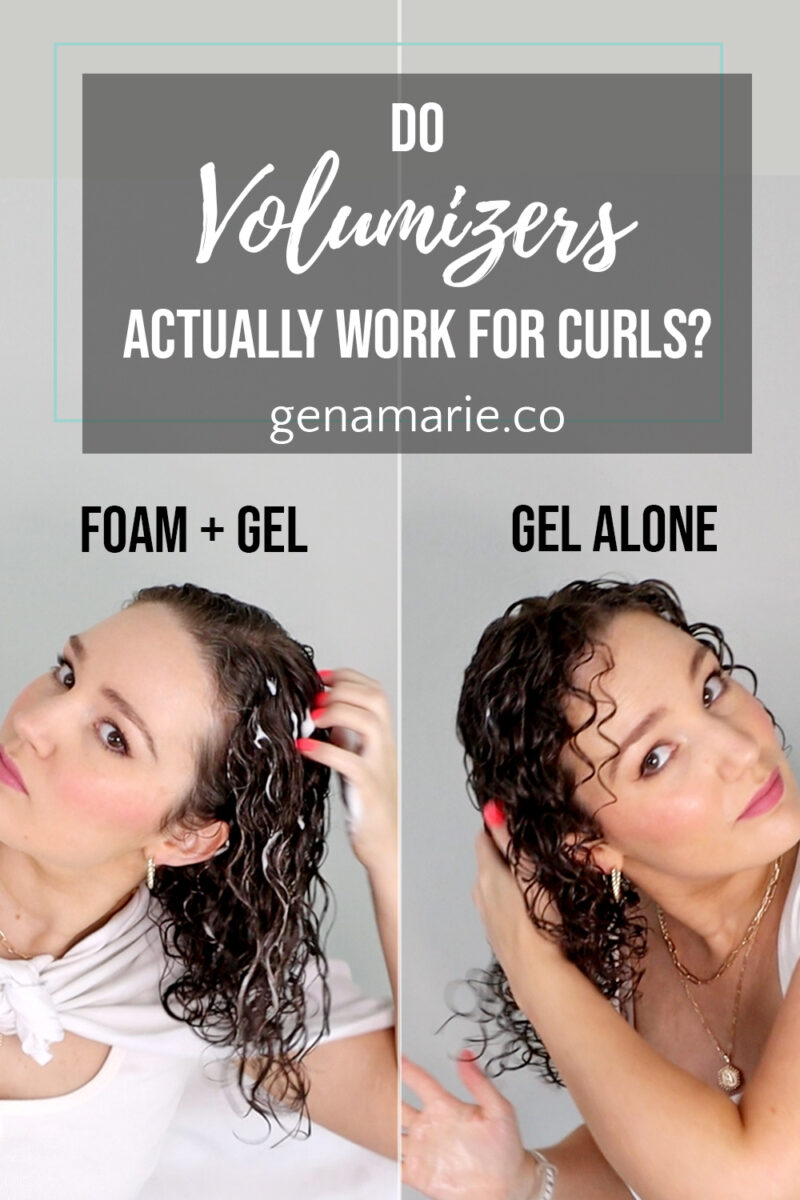
Volumizing products promise fuller-looking curls and lifted roots, but do they actually work for curly hair, or are they just sticky, overhyped, and a total

Disclaimer: This post is sponsored by Curlsmith. Products are gifted. Full disclosure here. If your hair turns into a frizzy puffball the moment you step
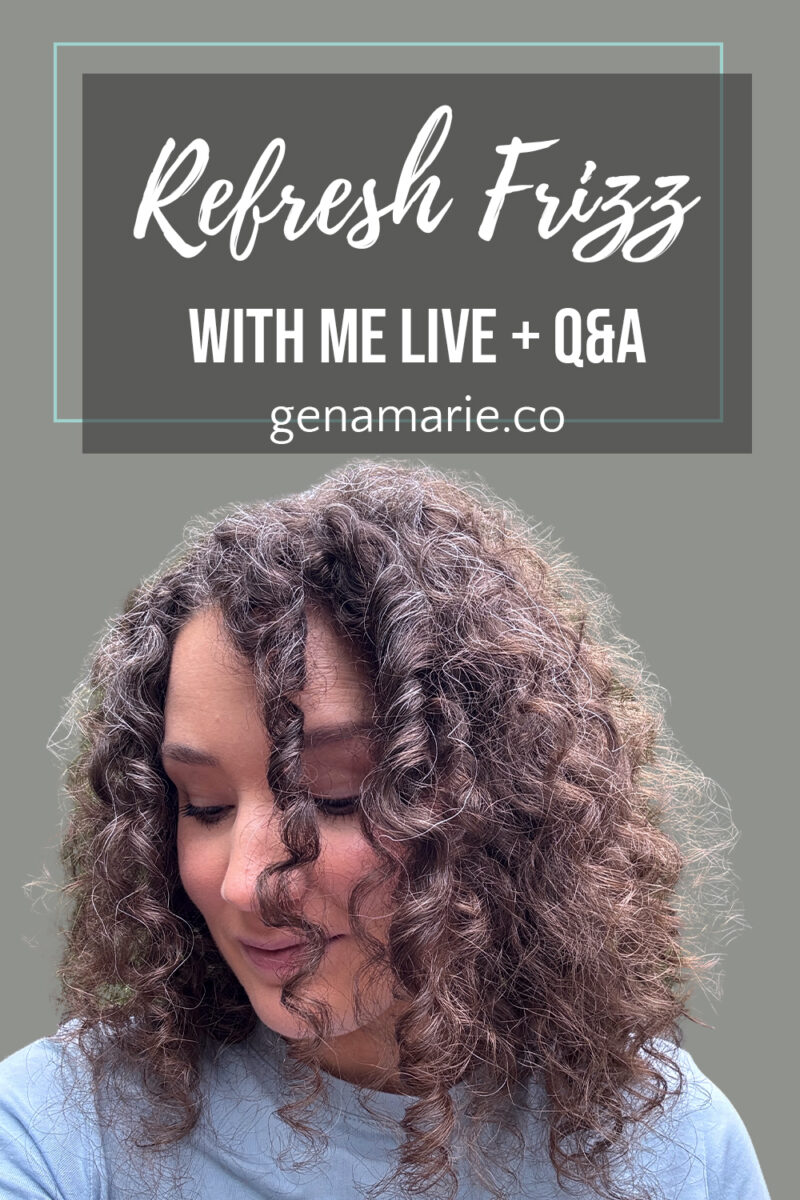
Today I refreshed my hair in real-time while sharing some of my best tips for refreshing frizz from lack of hold or humidity. I’m also
© 2025 Gena Marie